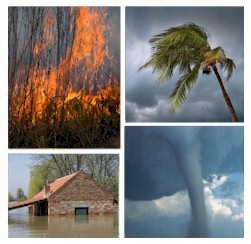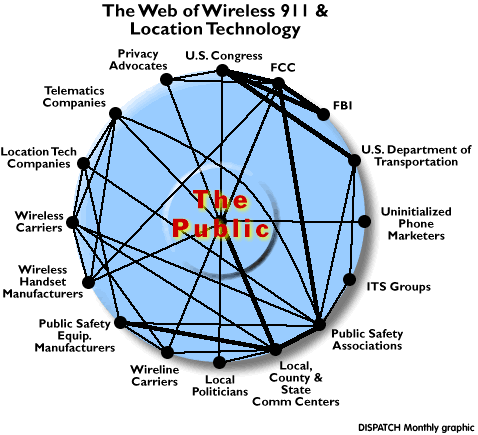|
|


Emergency Notification Systems
 This section of our technical library presents articles written about Emergency Alert Systems and Disaster Recovery definitions, terms and related information.
This section of our technical library presents articles written about Emergency Alert Systems and Disaster Recovery definitions, terms and related information.
The 911Broadcast emergency notification and alert service can deliver a large number of phone calls using a network of phone systems employing digital phone lines simultaneously. Should a disaster such as a snow storm, wild fire or flood hit your area, 911Broadcast systems can alert your community quickly providing specific instructions if an evacuation is required.
This service is available using our emergency broadcasting systems. If a dangerous chemical spill occurs in your community, you can target specific areas to call. If a severe snow storm hits your area, your community can be notified of school closings or event cancellations.
The Web Of Wireless 911 & Location Technology
from: www.911dispatch.com - please visit this website for more 911 and emergency related articles and information.

If you don't think the issue of wireless E911 is complicated--just examine
this diagram! It shows each of the stakeholders in wireless 911, and the
lines of communications or contact. The major links are shown with a bold
line. The public, as expected, is in the middle of the diagram. From the
diagram, it's obvious that the public safety organizations and the FCC are
the major operators in this issue, while some--including ITS groups and
the uninitialized phone marketers--are only loosely connected to the collection.
The entire issue of wireless E911 arose when public safety agencies began
to realize that wireless calls to 911 would not display ANI/ALI information
for the caller. That issue was helped along by an FCC decision to require
wireless carriers to transmit a caller's telephone number, and to display
their location. At the time, it seemed the issue was resolved.
But along the way, all sorts of other agencies, companies, groups and
points of view popped up--as the diagram reveals. Each has their own agenda
and lines of communications as detailed above.
Here's the run-down on each constituent, what services they normally
offer, and their agenda in relation to wireless E911. In this case, "agenda"
is not a negative term--it simply indicates the goals or purposes of the
group or company in relation to wireless E911. Note that the "ultimate"
agenda of most for-profit companies is money ($$$), but that many also have
regulatory or other goals that we've listed. Also recognize that most for-profit
companies are managed by people who genuinely believe in providing for the
public safety, and who are not driven solely by profit.
- U.S. Congress -- This group makes the laws and provide the funding
that pertains to 911, wireless and radios. Agenda: Keep the public
safe.
- FCC -- Writes the rules and regulations that govern telephones,
911 and radio. Agenda: Make sure all the stakeholders work together
effectively, keeping the public safe
- FBI -- Enforces most federal laws. Agenda: With court
authorization, use Phase II locating features to track criminals who use
a wireless phone.
- U.S. Department of Transportation -- Oversees the federal policies
and funding for national transportation issues. Agenda: Wants to
use any advanced technology, including Phase II, to help keep the nation's
highways safe and moving at the speed limit.
- Uninitialized phone marketers -- Sell refurbished or new 911-only
phones to the public. Agenda: $$$
- ITS groups -- Perform research and test concepts of intelligent
vehicle technology to make the highways safer and more efficient. Agenda:
Use Phase II technology to accomplish its missions.
- Public Safety Associations -- Provide national presence for
local agencies on all issues of emergency communications. Agenda:
Ensure that Phase I and II features are funded and implemented in a way
that's beneficial to comm centers and the public.
- Local, county and state comm centers -- Provide emergency and
non-emergency response services for law enforcement, fire and EMS. Agenda:
Implement Phase I and II features promptly, at the least cost, and with
the greatest benefit to the public.
- Local politicians -- Makes laws and provides funding for local
programs. Agenda: Keep their voters safe.
- Wireline carriers -- Provide dial-tone and long distance services
to customers. Agenda: Provide equipment and services to support
911 systems.
- Public safety equipment manufacturers -- Provide software and
hardware for CAD, computerized telephony, logging recorders, mapping and
computerized information management systems. Agenda: Interface their
products with wireline and wireless technology, thereby creating an attractive
product they can sell to comm centers
- Wireless handset manufacturers -- Design and manufacture wireless
telephone handsets. Agenda: Promptly adopt a Phase II technology
solution, and create an attractive, inexpensive and effective handset that
is popular with the public.
- Wireless carriers -- Provides services and equipment for making
wireless telephone calls. Agenda: Comply with the FCC's technology
and deadline requirements for Phase I and II; create revenue opportunities
from location technologies.
- Location technology companies -- Designs, builds and implements
methods of locating wireless telephone callers for public safety and commercial
purposes. Agenda: $$$
- Telematics companies -- Provides services and hardware for in-vehicle
voice and data communications. Agenda: $$$
- Privacy advocates -- Serves as the voice of the public in matters
of maintaining personal privacy. Agenda: Ensure that information
obtained by telematics or other locating systems is used only for its intended
purpose, and to ensure there are proper safeguards on information requested
or obtained by law enforcement (the FBI).
|




 This section of our technical library presents articles written about Emergency Alert Systems and Disaster Recovery definitions, terms and related information.
This section of our technical library presents articles written about Emergency Alert Systems and Disaster Recovery definitions, terms and related information.
